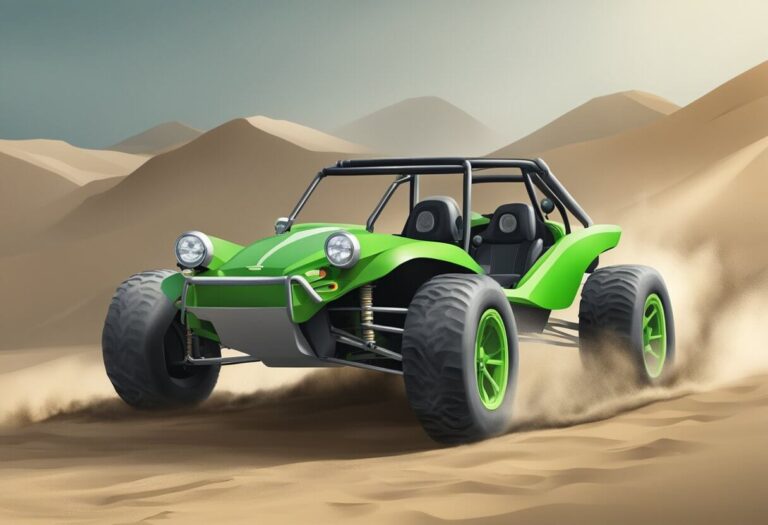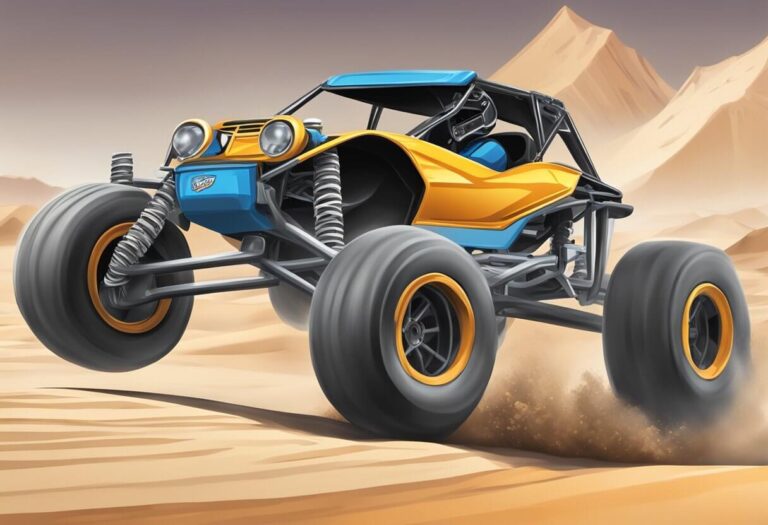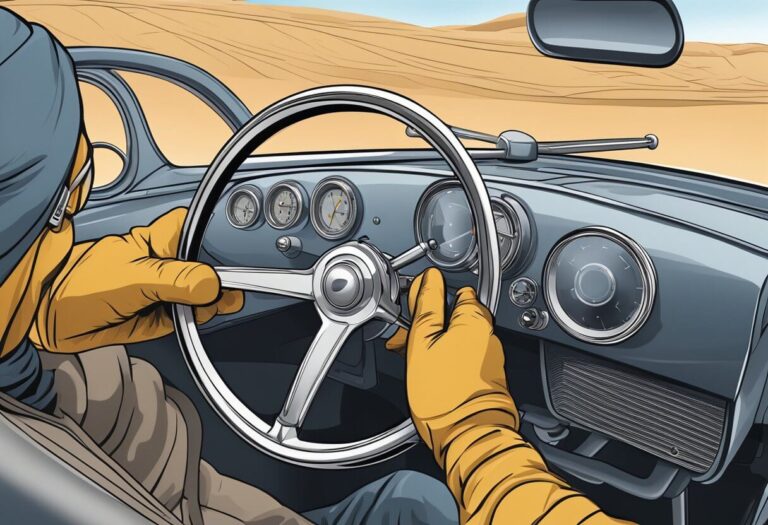Dune Buggy Wheels: Choosing the Best Tires for Off-Roading
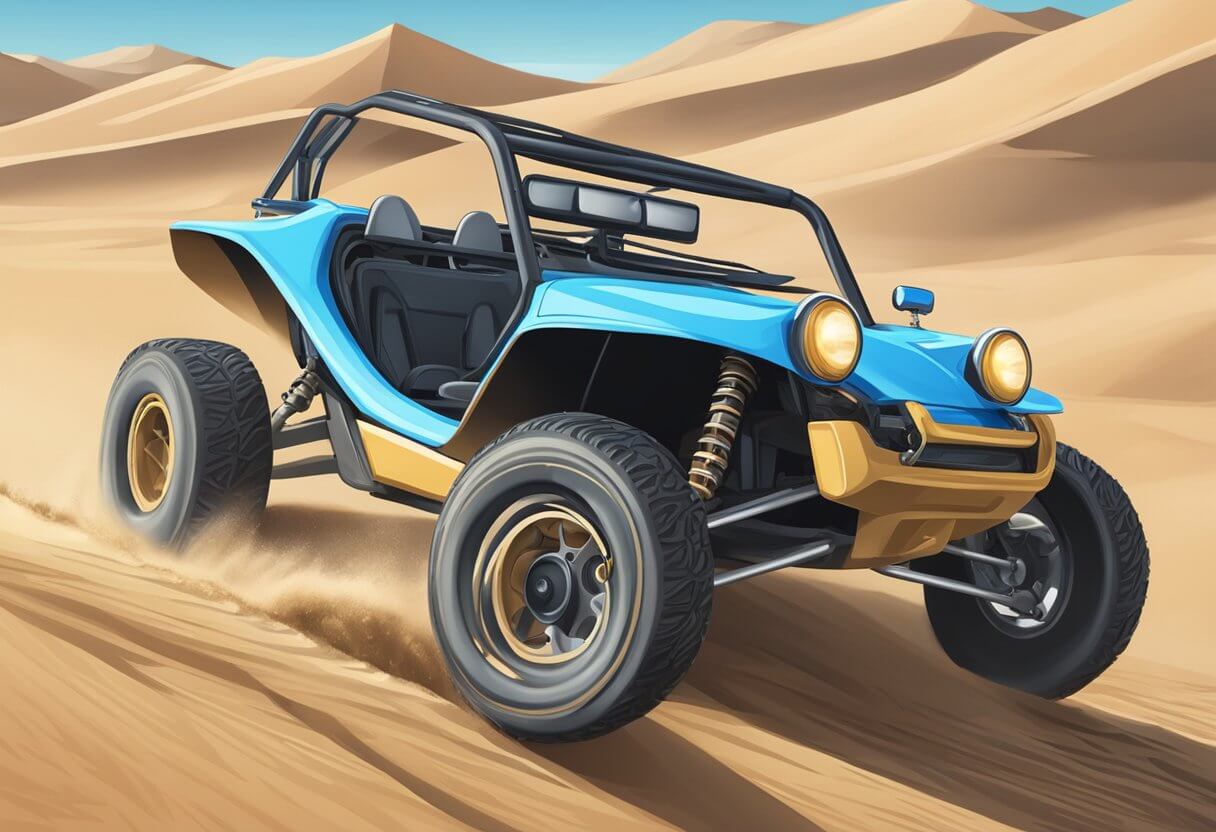
Dune buggies are off-road vehicles that are designed to be driven on sand dunes, beaches, and other sandy terrains. These vehicles require specialized wheels that are capable of handling the rough terrain and provide a smooth ride. Dune buggy wheels come in different types, sizes, and materials, and choosing the right one can make a significant difference in the performance and safety of the vehicle.
There are several types of dune buggy wheels available in the market, including steel wheels, aluminum wheels, chrome wheels, and beadlock wheels. Each type has its own advantages and disadvantages, and choosing the right one depends on the intended use of the vehicle. Steel wheels are durable and affordable, while aluminum wheels are lightweight and provide better performance. Chrome wheels are stylish and easy to maintain, while beadlock wheels provide better traction and prevent tire slippage.
When choosing dune buggy wheels, it is important to consider the material and construction of the wheels, the size and fitment, and the performance factors. The right wheels can improve the handling, acceleration, and braking of the vehicle, while the wrong ones can lead to poor performance and safety issues. Proper maintenance and care of the wheels are also essential to ensure their longevity and performance.
Key Takeaways
- Choosing the right dune buggy wheels depends on the intended use of the vehicle, and there are several types available, including steel, aluminum, chrome, and beadlock wheels.
- Factors to consider when choosing dune buggy wheels include the material and construction, size and fitment, and performance factors.
- Proper maintenance and care of the wheels are essential to ensure their longevity and performance, and safety considerations should also be taken into account.
Types of Dune Buggy Wheels
Dune buggies require wheels that are specifically designed for off-road use. There are several types of dune buggy wheels available in the market. In this section, we will discuss the most common types of dune buggy wheels.
All-Terrain Wheels
All-terrain wheels are designed to provide excellent traction on all types of terrain. These wheels are usually wider than normal wheels and have a deeper tread pattern. They are made from durable materials that can withstand harsh off-road conditions. All-terrain wheels are ideal for dune buggies that are used for both on-road and off-road driving.
Sand Wheels
Sand wheels are designed to provide maximum flotation on sandy terrain. These wheels are usually wider than normal wheels and have a smooth tread pattern. They are made from lightweight materials that can float on sand. Sand wheels are ideal for dune buggies that are used for sand dune driving.
Racing Wheels
Racing wheels are designed to provide maximum performance on the race track. These wheels are usually lightweight and have a low profile. They are made from high-quality materials that can withstand the high speeds and extreme conditions of racing. Racing wheels are ideal for dune buggies that are used for racing.
The right dune buggy wheels are essential for safe, enjoyable off-roading. All-terrain wheels suit both on-road and off-road driving. Sand wheels are ideal for sand dune driving. Racing wheels are best for dune buggy racing.
Material and Construction
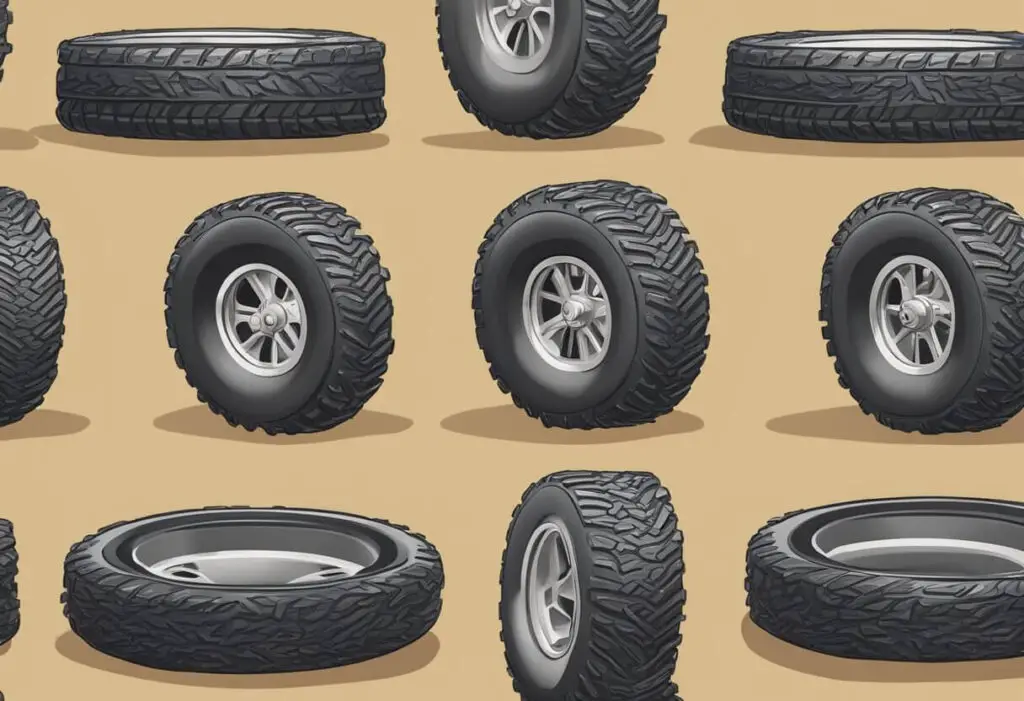
When it comes to dune buggy wheels, there are three main materials that are commonly used: aluminum, steel, and composite. Each material has its own advantages and disadvantages, so it’s important to choose the right one for your needs.
Aluminum Wheels
Aluminum wheels are a popular choice for dune buggy enthusiasts because they are lightweight and durable. They are also resistant to corrosion, which is important if you plan on driving your dune buggy on the beach. Aluminum wheels are typically more expensive than steel wheels, but they are also easier to customize. They can be machined to create intricate designs and patterns, which can give your dune buggy a unique look.
Steel Wheels
Steel wheels are a more affordable option for dune buggy enthusiasts. They are heavier than aluminum wheels, but they are also more durable. Steel wheels can handle rough terrain and heavy loads, making them a good choice for off-road driving. They are also easy to repair if they get damaged. However, steel wheels are more prone to rust and corrosion than aluminum wheels, so they require more maintenance.
Composite Wheels
Composite wheels are a newer option for dune buggy enthusiasts. They are made from a combination of materials, such as carbon fiber and resin. Composite wheels are lightweight and strong, making them a good choice for off-road driving. They are also resistant to corrosion and can be customized with different colors and designs. However, composite wheels are more expensive than aluminum and steel wheels, and they are not as widely available.
Overall, the choice of material for your dune buggy wheels will depend on your budget, driving needs, and personal preferences. It’s important to choose high-quality wheels that are designed to handle the demands of off-road driving.
Size and Fitment
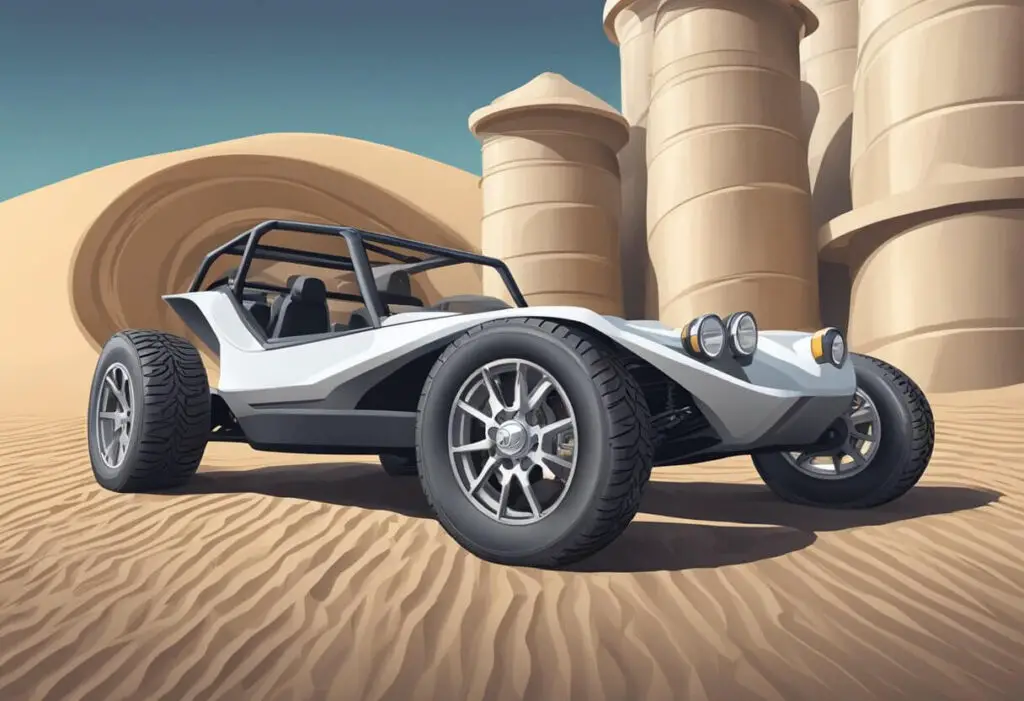
When it comes to selecting the right wheels for your dune buggy, size and fitment are critical considerations. The following subsections will help you understand the key factors that you need to consider when choosing the right wheels for your dune buggy.
Wheel Diameter
The diameter of the wheel is a crucial factor that affects the overall performance of your dune buggy. In general, the larger the diameter of the wheel, the better the performance of the buggy. However, larger wheels may also increase the weight of the vehicle, which can negatively impact its handling and acceleration. Most dune buggies use wheels with a diameter of 15 inches or 16 inches.
Bolt Patterns
The bolt pattern of the wheel is another important consideration when selecting the right wheels for your dune buggy. The bolt pattern refers to the number of bolts on the wheel and the distance between them. It is essential to ensure that the bolt pattern of the wheel matches that of the vehicle. Most dune buggies use a 4-lug bolt pattern, but some may have a 5-lug bolt pattern.
Offset and Backspacing
The offset and backspacing of the wheel are also critical factors that affect the performance of your dune buggy. The offset refers to the distance between the centerline of the wheel and the mounting surface, while the backspacing refers to the distance between the mounting surface and the back of the wheel. It is essential to choose wheels with the right offset and backspacing to ensure that they fit correctly and do not rub against the fenders or suspension components.
Performance Factors
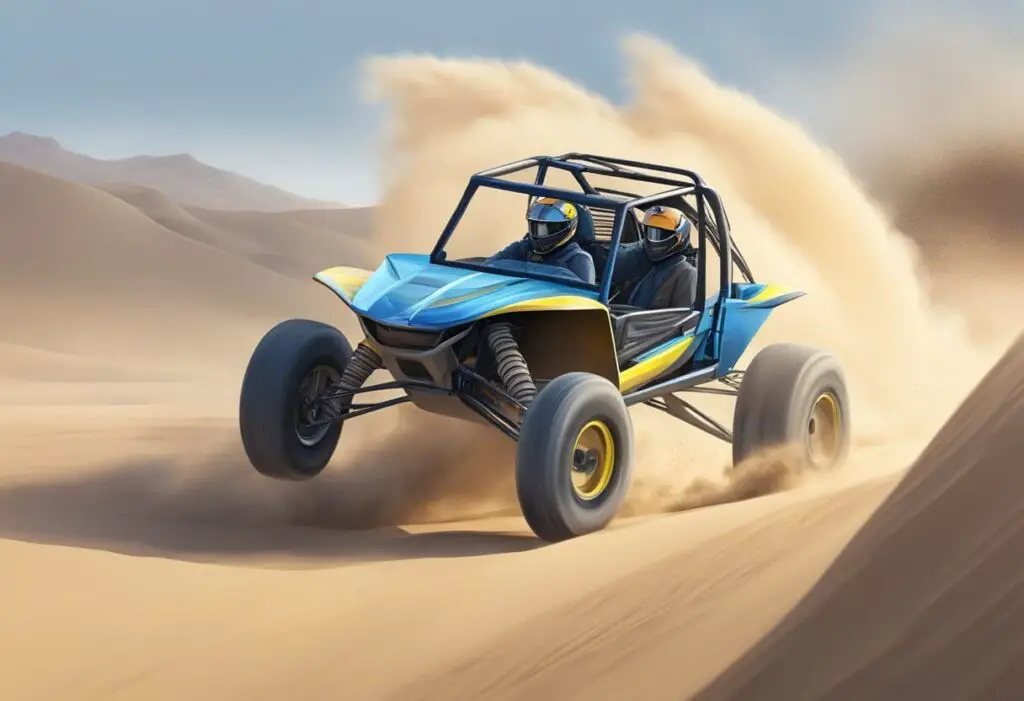
Tread Patterns
The tread pattern of dune buggy wheels plays a crucial role in determining the vehicle’s performance on different terrains. For instance, a paddle-style tread pattern is ideal for sand dunes as it provides maximum traction on loose sand. On the other hand, a knobby tread pattern is better suited for rocky or muddy terrain as it offers better grip and stability. Therefore, when selecting dune buggy wheels, it is essential to consider the intended use of the vehicle and choose a tread pattern that complements the terrain.
Wheel Weight
The weight of dune buggy wheels is another crucial performance factor that affects the vehicle’s speed, acceleration, and handling. Lighter wheels generally offer better acceleration and handling as they reduce the unsprung weight of the vehicle. However, heavier wheels provide better stability and traction, especially on rough terrain. Therefore, when selecting dune buggy wheels, it is essential to strike a balance between weight and performance.
Impact on Suspension
The type of dune buggy wheels used can significantly impact the vehicle’s suspension. Heavy wheels can cause excessive strain on the suspension, leading to premature wear and tear. On the other hand, light wheels can improve the vehicle’s suspension by reducing unsprung weight. Therefore, when selecting dune buggy wheels, it is essential to consider the impact on suspension and choose wheels that are compatible with the vehicle’s suspension system.
Maintenance and Care
Cleaning Practices
Regular cleaning of dune buggy wheels is essential to maintain their performance and longevity. It is recommended to clean the wheels after each use to prevent the accumulation of dirt, sand, and other debris. The cleaning process involves removing any dirt or debris from the wheels using a soft-bristled brush or a cloth. One can also use a mild soap solution to clean the wheels. It is important to avoid using harsh chemicals or abrasive cleaning agents as they can damage the wheels’ finish.
Inspection Routines
Regular inspection of dune buggy wheels is crucial to ensure their safety and longevity. It is recommended to inspect the wheels before each use to detect any signs of damage or wear. The inspection process involves checking the wheels for any cracks, dents, or bends. One should also inspect the lug nuts and bolts to ensure that they are tight and secure. Any signs of damage or wear should be addressed immediately to prevent further damage.
Replacement Strategies
Dune buggy wheels are designed to last for a long time. However, they can get damaged or worn out over time. It is recommended to replace the wheels if they are damaged beyond repair or if they have worn out beyond their useful life. One should also consider replacing the wheels if they are not suitable for the terrain or the driving conditions. When replacing the wheels, it is important to choose wheels that are compatible with the dune buggy’s specifications and requirements.
Regular dune buggy wheel maintenance, including cleaning, inspection, and replacement, is essential for performance, safety, and longevity. Following outlined practices ensures wheels are in good condition for any adventure.
Customization Options
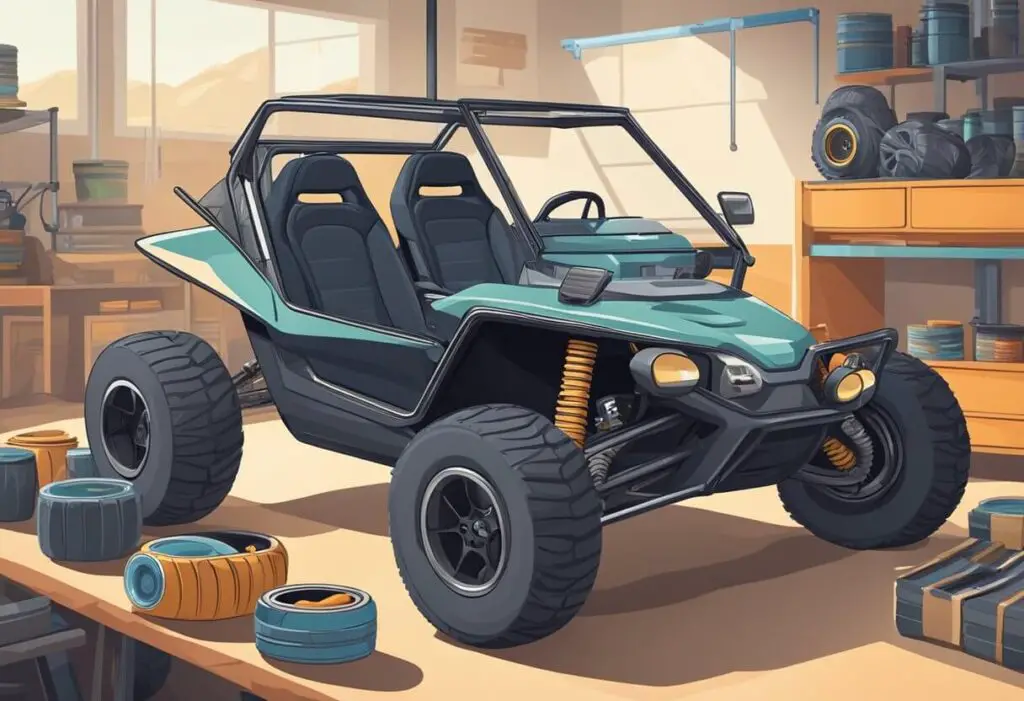
Dune buggies are known for their unique and customizable features, and wheels are no exception. When it comes to customization options for dune buggy wheels, there are several factors to consider. In this section, we will explore some of the most popular customization options for dune buggy wheels.
Color and Finish
One of the most popular customization options for dune buggy wheels is color and finish. Dune buggy owners can choose from a wide range of colors and finishes to match their personal style. Some popular finishes include chrome, polished aluminum, and powder-coated colors. A powder-coated finish is a great option for those who want a durable and long-lasting finish.
Beadlock Wheels
Another popular customization option for dune buggy wheels is beadlock wheels. Beadlock wheels are designed to keep the tire bead securely in place, even when driving on rough terrain. This is especially important for dune buggy owners who enjoy off-road driving. Beadlock wheels are available in a variety of styles and finishes to match the overall look of the dune buggy.
Hubcaps and Accessories
Dune buggy owners can also customize their wheels with hubcaps and other accessories. Hubcaps are a great way to add a touch of personality to the wheels, and they come in a variety of styles and finishes. Other popular accessories include wheel spacers, lug nuts, and valve stem caps. These accessories can help to improve the overall look of the wheels and add a touch of personalization to the dune buggy.
Safety Considerations
When it comes to dune buggy wheels, safety should always be a top priority. Here are some important safety considerations to keep in mind:
Installation Guidelines
It is important to ensure that the wheels are installed correctly to prevent accidents. The installation process should be carried out by a professional mechanic who has experience with dune buggies. The lug nuts should be tightened to the manufacturer’s specifications to prevent the wheels from coming loose while driving.
Load Ratings
The load rating of the wheels should be considered when selecting the appropriate wheels for your dune buggy. The load rating indicates the maximum weight that the wheels can safely carry. It is important to select wheels with a load rating that is appropriate for the weight of the dune buggy and its cargo.
Tire Pressure Monitoring
Maintaining the correct tire pressure is crucial for the safe operation of the dune buggy. Overinflated or underinflated tires can lead to accidents. It is important to regularly check the tire pressure and inflate or deflate the tires as needed. A tire pressure monitoring system can be installed to make this process easier and more convenient.
In summary, safety should always be a top priority when it comes to dune buggy wheels. Proper installation, load ratings, and tire pressure monitoring are all important factors to consider to ensure a safe and enjoyable driving experience.
Regulatory Compliance
DOT Standards
When it comes to dune buggy wheels, it’s important to ensure that they meet Department of Transportation (DOT) standards. This is because the DOT has established safety regulations for all vehicles on public roads, including dune buggies.
DOT-compliant wheels will have a stamp or label indicating that they meet the necessary standards. These standards include requirements for load rating, size, and construction. It’s important to note that not all wheels are DOT-compliant, so it’s essential to check before purchasing.
Off-Road Regulations
In addition to complying with DOT standards, dune buggy wheels must also meet off-road regulations. These regulations vary depending on the state and location where the dune buggy is being operated.
Off-road regulations typically include requirements for tire size, tread depth, and tire pressure. It’s important to ensure that the wheels and tires on a dune buggy are suitable for off-road use, as they will be subjected to rough terrain and extreme conditions.
Overall, it’s essential to comply with both DOT and off-road regulations when selecting wheels for a dune buggy. Failure to do so could result in fines or even accidents. Always check with local authorities to determine the specific regulations that apply to your location.
Buying Guide
When it comes to buying dune buggy wheels, there are several factors to consider to ensure that you are getting the best product for your needs. This section will cover the different aspects that you should look for when selecting dune buggy wheels.
Brand Comparisons
One of the first things to consider when buying dune buggy wheels is the brand. It is essential to research and compare different brands to determine which one offers the best quality and value for money. Look for brands that have a good reputation for producing durable and high-performance wheels.
Price Points
Another important factor to consider when buying dune buggy wheels is the price. The cost of wheels can vary widely depending on the brand, size, and material. It is essential to set a budget and then look for wheels that fit within that budget. Remember that the cheapest option may not always be the best quality, so it is essential to balance cost with quality.
Warranty and Support
When buying dune buggy wheels, it is also important to consider the warranty and support offered by the manufacturer. Look for brands that offer a warranty that covers defects and other issues that may arise with the wheels. Additionally, choose a brand that offers good customer support and is willing to help you with any questions or concerns you may have.
In summary, when selecting dune buggy wheels, it is essential to look for a brand that offers good quality, value for money, and warranty and support. By considering these factors, you can be sure that you are getting the best product for your needs.

